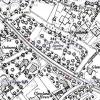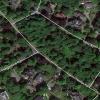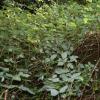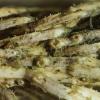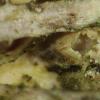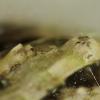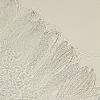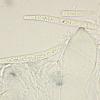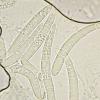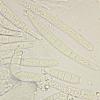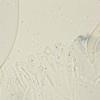
20-12-2025 23:08
Patrice TANCHAUDBonsoir, récolte sur sol sablonneux dans l'arri�

21-12-2025 09:32
Hello.A tiny ascomycete found embedded in wood in

20-12-2025 15:47
Mirek GrycHi.These grew on pine wood that was heavily covere

18-12-2025 21:17
Pol DebaenstThe identification took me to Byssonectria deformi

15-12-2025 07:09
 Danny Newman
Danny Newman
indet. Rutstroemiaceae sp. on unk. fallen leavesMc

19-12-2025 10:10
Patrice TANCHAUDBonjour, récolte réalisée en milieu dunaire, a

18-12-2025 17:23
 Bruno Coué
Bruno Coué
Bonjour,je serais heureux d'avoir votre avis sur c

18-12-2025 18:07
Margot en Geert VullingsThese plumes were found on rotten wood.They strong
Karstenia on Urtica
Chris Yeates,
13-09-2017 21:37
 Bonsoir tous
Bonsoir tousthis rather difficult-to-see asco was collected on a dead stem of Urtica dioica, around an old leaf-node.
Asci taking a while (15-20 minutes) to respond to IKI, but then apices blue without KOH.
Ascospores fasciculate in the ascus, multi-guttulate, cylindric to narrow clavate, 41.7-57 x 2-2.5µm; up to 9-septate.
This looks very close to Zotto's HB 6113, provisionally named Karstenia 'guttulata". Any comments would be very welcome . . .
amitiés
Chris
Hans-Otto Baral,
13-09-2017 22:26

Re : Karstenia on Urtica
Hi Chris!
this could well be, but I would also compare K. idaei. This is a difficult group
did you try my old key?
Zotto
this could well be, but I would also compare K. idaei. This is a difficult group
did you try my old key?
Zotto
Peter Thompson,
14-09-2017 08:54
Re : Karstenia on Urtica
Hello Chris,
Yes, I have five records of Karstenia idaei in the CATE2 database. Two of these were hosted by Urtica dioica.
I think that you have found this species.
With Best Wishes,
Peter.
Yes, I have five records of Karstenia idaei in the CATE2 database. Two of these were hosted by Urtica dioica.
I think that you have found this species.
With Best Wishes,
Peter.
Chris Yeates,
14-09-2017 12:44

Re : Karstenia on Urtica
@Zotto thanks for that - no, I hadn't applied that key - very useful. Karstenia idaei seems the best option, despite the comment ""usually without apical ring" possibly carried forward from Sherwood in Mycotaxon 5 pp. 53-55 (1977). She comments J- but was clearly looking at old herbarium material and presumably with MLZ; vital taxonomy coming in useful again!
@ Peter - that is extremely useful, thank you; it's always reassuring to remember that one isn't the only person looking at these obscure organisms.
The site in question is a small area of rather ordinary woodland in suburban Huddersfield. I have adopted it as a regular site to visit as it is close to home. It's facinating what can be found in such a site. Particularly of interest is that there was a bowling green there up to a century ago (see 1907 map below). World War I seems to have seen the end of that. The area where the bowling green was is still open but is now a dense virtual monoculture of Rubus idaeus - this is where that record of Orbilia rubrovaculata came from Zotto, which you commented was the first Orbilia record you knew of on R. idaeus. I have a feeling that I have seen a Karstenia (not taken back home) on that plant from here; though it is clear from the literature and Peter's records that this species has a wide host range.
best wishes
Chris
@ Peter - that is extremely useful, thank you; it's always reassuring to remember that one isn't the only person looking at these obscure organisms.
The site in question is a small area of rather ordinary woodland in suburban Huddersfield. I have adopted it as a regular site to visit as it is close to home. It's facinating what can be found in such a site. Particularly of interest is that there was a bowling green there up to a century ago (see 1907 map below). World War I seems to have seen the end of that. The area where the bowling green was is still open but is now a dense virtual monoculture of Rubus idaeus - this is where that record of Orbilia rubrovaculata came from Zotto, which you commented was the first Orbilia record you knew of on R. idaeus. I have a feeling that I have seen a Karstenia (not taken back home) on that plant from here; though it is clear from the literature and Peter's records that this species has a wide host range.
best wishes
Chris
Hans-Otto Baral,
14-09-2017 13:22

Re : Karstenia on Urtica
Hi Chris
the absence of an amyloid ring was not taken from Sherwood but is my personla pobservation with IKI. In my list are about 25 collections referred to K. idaei on various substrates, rarely even conifers.
Zotto
the absence of an amyloid ring was not taken from Sherwood but is my personla pobservation with IKI. In my list are about 25 collections referred to K. idaei on various substrates, rarely even conifers.
Zotto
Chris Yeates,
14-09-2017 14:47

Re : Karstenia on Urtica
Ah yes, I have now had chance to look at your excellent drawings, Zotto. I agree this is quite a tricky group. I shall keep my eye out for further collections.
Thanks again
Chris
Thanks again
Chris
Peter Püwert,
15-09-2017 21:44
Chris Yeates,
16-09-2017 02:09

Re : Karstenia on Urtica
Thank you for that Peter
That certainly looks like the same fungus, and if only one taxon is involved then it really does have a very wide host range. In these cases one often wonders whether a complex of crypto-species might be involved.
mit besten Grüßen
Chris
That certainly looks like the same fungus, and if only one taxon is involved then it really does have a very wide host range. In these cases one often wonders whether a complex of crypto-species might be involved.
mit besten Grüßen
Chris
Hans-Otto Baral,
16-09-2017 08:15

Re : Karstenia on Urtica
The problem is actually the high variation, but I do not see a correlation with the substrate. The spores vary in width from 2-2.5 over usually 3-4 up to 4-5 µm, and the asci have an amyloid apical ring in some collections but not in others.
When I saw my first collection (HB 3143), I even thought it could be a lichen, Ramonia chrysophaea, and with this name also Peter's specimen was compared by him when he put it on Ascofrance in 2015. Now I noticed that he has also seen amyloid apical rings. The posting is still there: http://www.ascofrance.fr/search_forum/38811
As I wrote there, the closely related K. rhopaloides is not always very easily separated because it also varies in the spores, and it was also confused with a lichen, Ramonia interjecta, which is nothing but a synonym of K. rhopaloides.
Zotto
When I saw my first collection (HB 3143), I even thought it could be a lichen, Ramonia chrysophaea, and with this name also Peter's specimen was compared by him when he put it on Ascofrance in 2015. Now I noticed that he has also seen amyloid apical rings. The posting is still there: http://www.ascofrance.fr/search_forum/38811
As I wrote there, the closely related K. rhopaloides is not always very easily separated because it also varies in the spores, and it was also confused with a lichen, Ramonia interjecta, which is nothing but a synonym of K. rhopaloides.
Zotto

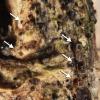
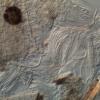
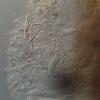
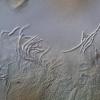
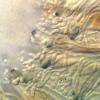
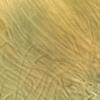
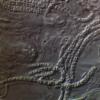
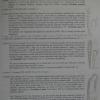
 KARSTENIA-0001.doc
KARSTENIA-0001.doc